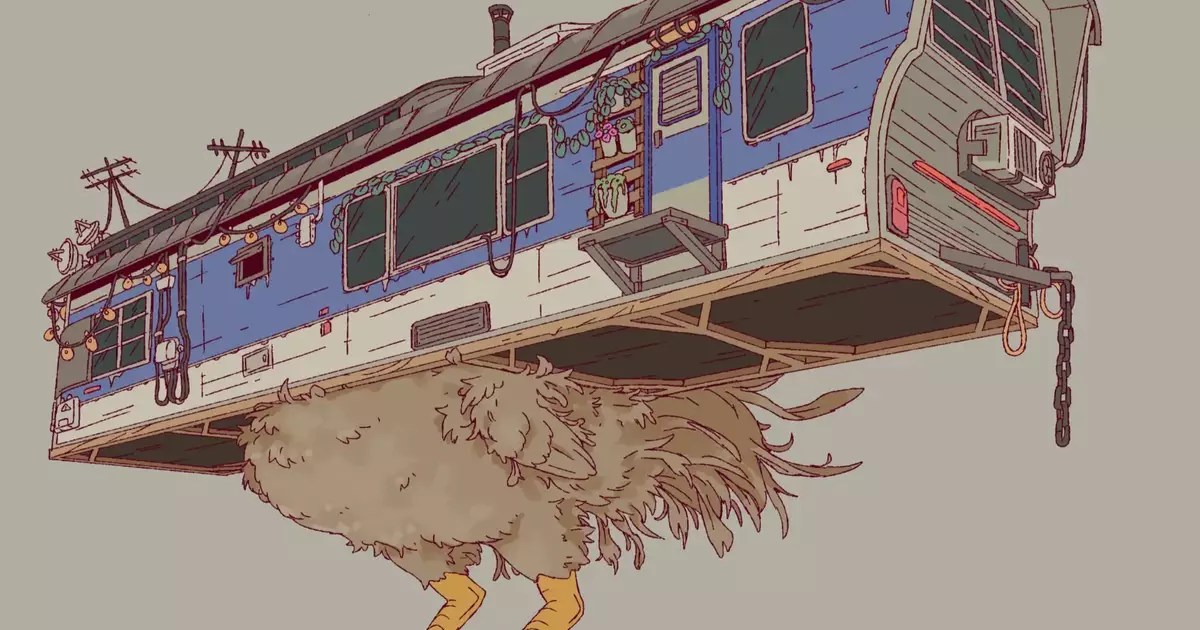In the evolving landscape of video games, few experiences are as evocative as those that blend whimsy with the macabre. Giant Sparrow, renowned for their poignant storytelling in “What Remains of Edith Finch,” is poised to explore this duality again with their upcoming title, tentatively dubbed “Heron.” This project promises a delightful mix of surrealism and biological study, inviting players to step into the shoes of a field biologist immersed in the strangeness of organic life. Rooted in both humor and horror, the new game stands to unsettle and intrigue, much like its predecessor.
The foundation laid by “What Remains of Edith Finch” set a high bar for narrative-driven games. Players traversed the tragic stories of the Finch family, each chapter a different interactive vignette that defied conventional gameplay mechanics. With “Heron,” Giant Sparrow aims to replicate this innovative storytelling format while venturing into the unexplored territory of nature documentaries. Yet, unlike typical nature films that often oversimplify the complexity of wildlife, this game seems to promise a deeper, albeit eccentric, exploration of life on Earth.
Notably, director Ian Dallas has criticized the conventional tropes present in many nature documentaries. He claims that these works sometimes lack depth, only skimming the surface of biologically rich narratives. His assertion that such films often serve more as distractions for young viewers speaks volumes about the industry’s tendency to render nature palatable yet superficial. Giant Sparrow’s goal, therefore, appears twofold: to provide an engaging experience while simultaneously challenging players to confront the bizarre intricacies of biological life.
Through curious design choices—such as anthropomorphized chicken-legged houses—Giant Sparrow invites players to ponder the absurdities of life. As Dallas indicates, embracing goofy elements leads to more interesting creative outcomes. This understanding emphasizes that games, much like nature itself, thrive on diversity. The blend of humor and horror promises to keep players on their toes, balancing delight against the unsettling realities of nature.
As players delve into “Heron,” they will encounter surreal situations that provoke both thought and emotion. Images of giraffes leaning down for a gentle touch, or interacting with bizarre versions of familiar animals, hint at the unique gameplay mechanics that await. Dallas’s emphasis on exploration and play suggests that players will not merely witness nature but engage with it in meaningful ways. It’s a concept reminiscent of childhood, where curiosity was the fuel for discovery.
Moreover, Dallas’s inclination to depict biological processes in all their grotesque beauty allows for an exploration of not just wildlife but the intricacies of survival. From the unsettling mating rituals of butterflies to the repulsive and captivating canopy of life, the game may provide an unfiltered lens through which to view the natural world. Such a treatment can cultivate a sense of wonder and manage the discomfort that often accompanies real-life ecosystems.
While there are many intriguing aspects to “Heron,” several questions remain about the gameplay dynamics and thematic depths that are yet to be fully disclosed. Will players merely interact with the whimsical creatures, or will they undergo a transformation in their understanding of nature’s complexities? Furthermore, how will the game’s designers balance exploration with narrative progression? The juxtaposition of player agency against biological realism poses intriguing queries about the designers’ intentions.
As anticipation for this unique project builds, parallels can be drawn with the “New Weird” literary genre, which often marries the familiar with the strange. This approach cultivates an environment ripe for existential exploration—an eco-critical lens that examines humankind’s relationship with the natural world. This unique treatment aligns seamlessly with the observed emergence of “Zoochosis,” where the uncanny nuances of animal behavior highlight a sense of tension and unpredictability.
Ultimately, Giant Sparrow’s new endeavor promises to enrich the indie game landscape with its unique blend of humor, horror, and whimsical exploration of biological life. It aims not just to entertain but to invoke reflection about the bizarre world that exists outside the confines of human experience. If “Heron” delivers on its early conceptual promise, it may well become a noteworthy voyager through the rich tapestry of life, urging players to embrace both its wonders and its unsettling peculiarities. As we await its unveiling, the prospect of enchanting yet disconcerting interactive narratives continues to fascinate and excite.


Leave a Reply